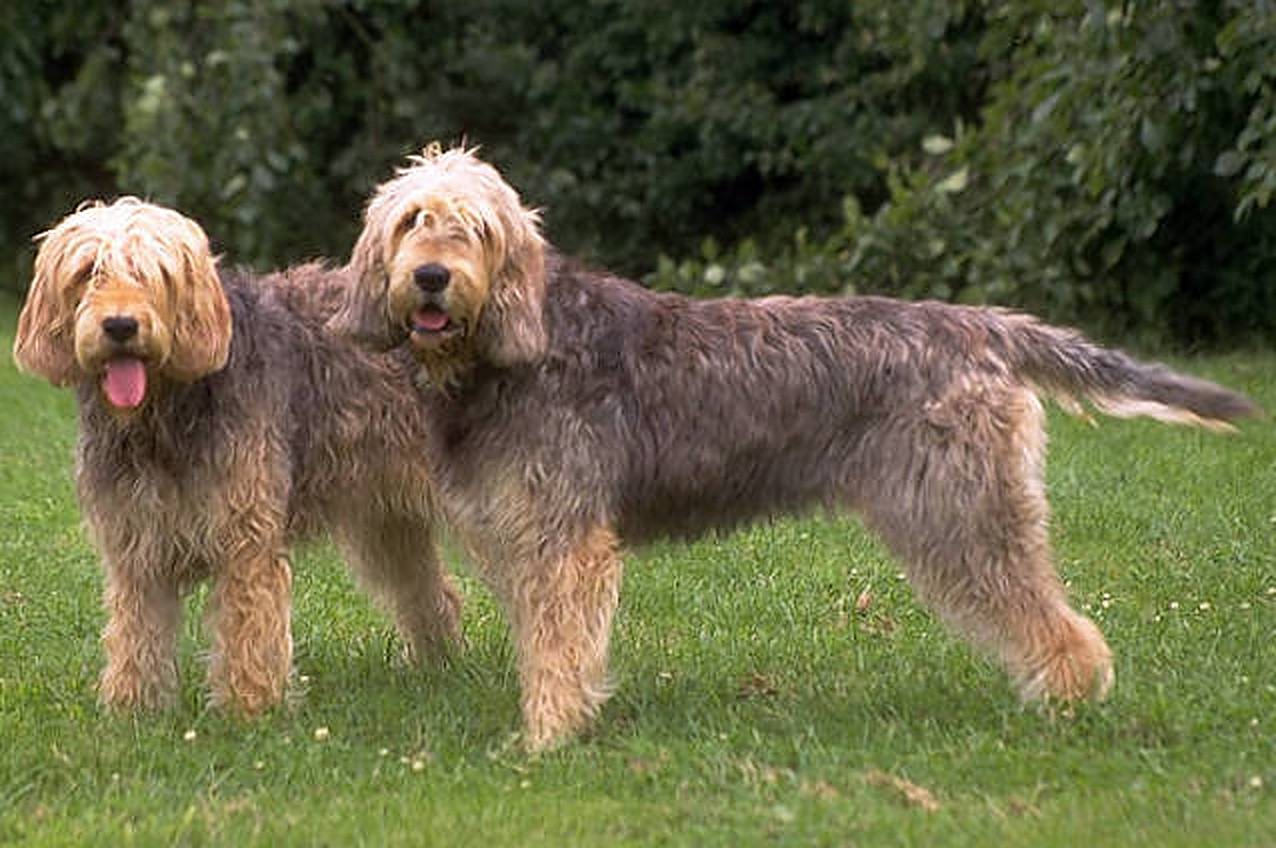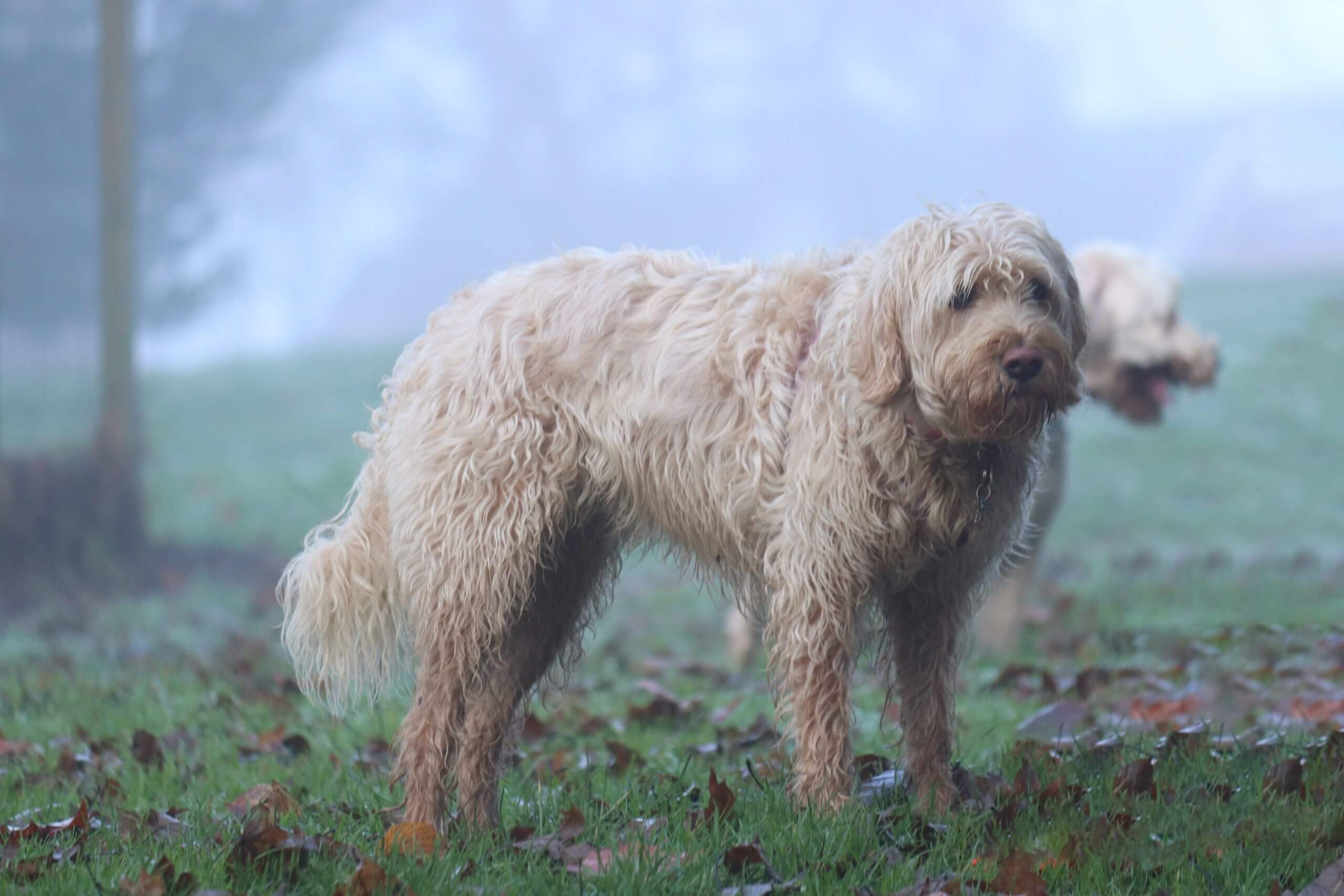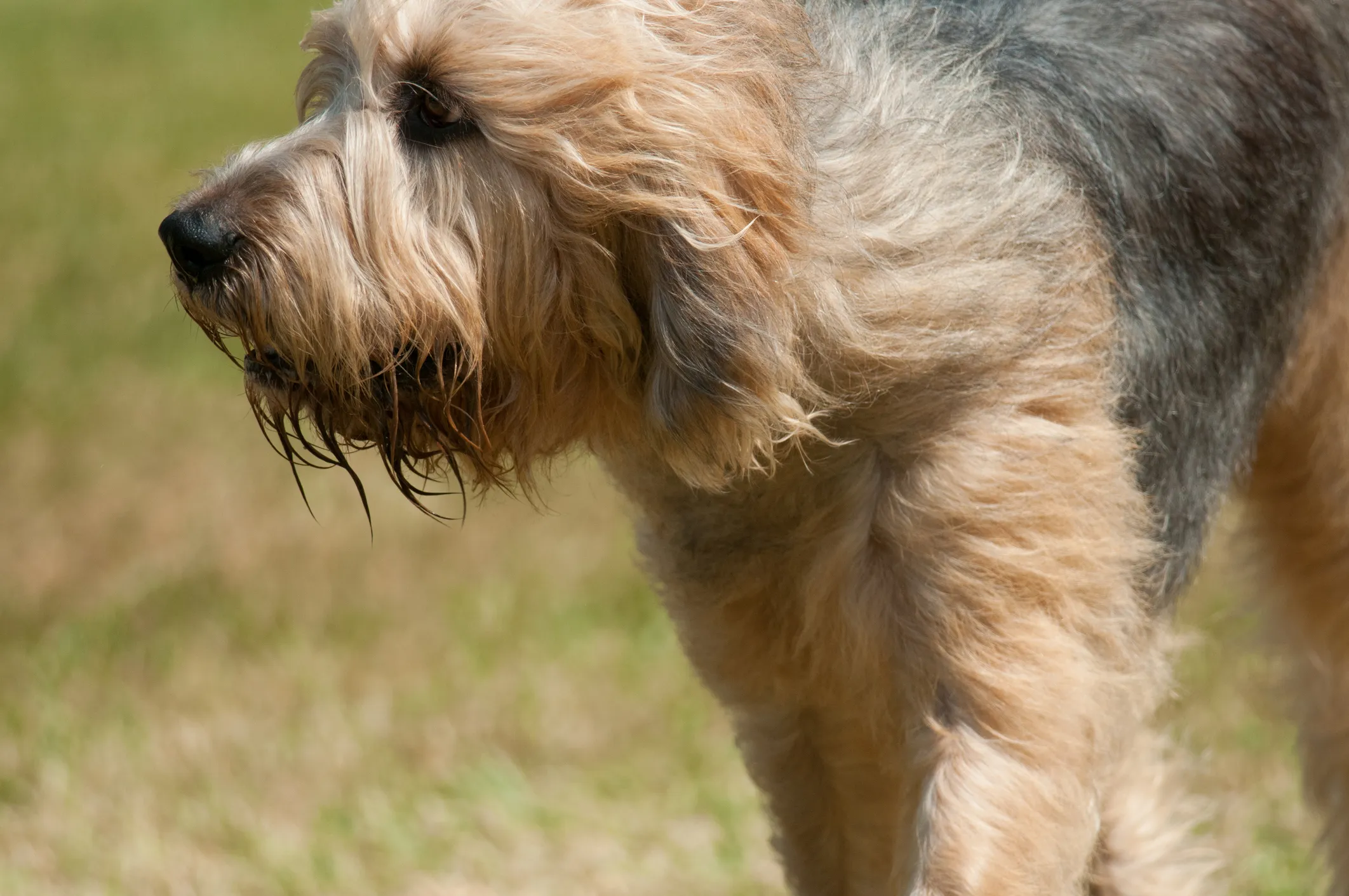
The Otterhound is a uniquely British breed with deep historical roots, originally developed in medieval England for the purpose of otter hunting. During the 12th century, river otters posed a threat to the fish population in private fishing ponds and rivers, prompting the development of a specialized scent hound capable of tracking and swimming long distances. This breed likely evolved from a mix of Bloodhounds, Griffons, and other French hounds, resulting in a large, strong dog with remarkable stamina and a keen nose for scent—even in water.
Otterhounds were officially recognized by the American Kennel Club (AKC) in 1909. After otter hunting was outlawed in the UK in 1978 for conservation reasons, the breed’s population declined significantly, leading to its current status as one of the rarest dog breeds in the world.
The Otterhound has always been a niche breed, and today it is critically endangered. With fewer than 1,000 individuals worldwide, it is one of the most endangered purebred dogs. Despite this, dedicated breeders and enthusiasts are working to preserve the Otterhound's lineage and unique characteristics.
Its rarity and large size make it less commonly seen as a companion animal, but the Otterhound has a loyal following for its friendly demeanor, unusual appearance, and versatility as both a working and family dog.
The Otterhound is unmistakable in appearance, combining the rugged build of a working dog with a shaggy, water-resistant coat and soulful expression.
Coat:
Rough, dense, and water-repellent with a woolly undercoat and coarse outer layer. Slightly oily texture.
Color:
Comes in a wide range of hound colors, including black and tan, grizzle, wheaten, liver, and various combinations.
Size:
• Height: 24–27 inches (61–69 cm)
• Weight: 80–115 lbs (36–52 kg)
Build:
Large, athletic, and rectangular in shape. Strong-boned with large feet well-suited for swimming.
Head and Eyes:
Long, noble head with a prominent nose and deep-set, expressive eyes.
Ears:
Long, pendulous, and set low—covered in soft, wavy hair.
Despite its hunting origins, the Otterhound is surprisingly affectionate, gentle, and even comical at times. Its independent streak, however, reflects its background as a tracking dog accustomed to working alone.
Friendly and Laid-back:
Typically good with children and other dogs. Enjoys company but can be independent.
Vocal:
Known for its deep, melodic baying. This vocal trait can be charming or disruptive depending on your lifestyle.
Stubborn but Intelligent:
While smart, Otterhounds are not always eager to please. Patience and positive reinforcement work best in training.
Energetic but Calm Indoors:
Happy to snooze between exercise sessions. Needs regular outings but not hyperactive.
Natural Swimmer and Scenthound:
Water is in its DNA. Thrives with opportunities to swim and use its nose.

Rare and Distinctive:
Ideal for those who want a one-of-a-kind companion with historical significance and a noble air.
Good-Natured and Fun:
Playful without being overly demanding. Enjoys family life and outdoor adventures.
Great Nose and Water Skills:
Perfect for scent work, tracking, or activities involving water—this breed excels when given a job.
Tolerant and Adaptable:
Can be mellow indoors but requires physical and mental engagement.
Training:
Begin early with consistent, reward-based methods. Socialization is important due to their independent nature.
Exercise:
Needs daily activity such as walks, hikes, swimming, or scent games. Ideal for active families or rural homes.
Grooming:
Moderate grooming needs. Brush several times per week to prevent matting. Occasional bathing required, especially after swims.
Living Environment:
Best in homes with space and access to secure outdoor areas. Adaptable to various climates due to its weather-resistant coat.
Although generally healthy, Otterhounds are vulnerable to certain genetic conditions:
• Hip dysplasia
• Gastric torsion (bloat)
• Epilepsy
• Thrombopathia (a bleeding disorder present in some lines)
Routine veterinary care, health screenings, and responsible breeding help mitigate these risks.

Compared to the Bloodhound:
Both are scent hounds with droopy features. Bloodhounds are more intense trackers, while Otterhounds are more playful and water-oriented.
Compared to the Irish Wolfhound:
Wolfhounds are taller and more reserved. Otterhounds have a rougher coat and more vocal personality.
Compared to the Labrador Retriever:
Labradors are more obedient and people-pleasing. Otterhounds are more independent and less common.
Choose the Otterhound if:
• You want a rare, charismatic breed with historical charm
• You enjoy outdoor activities, especially involving water
• You can handle a stubborn but lovable hound
• You appreciate a deep, melodious bark
Not Ideal For:
• Apartment dwellers or noise-sensitive households
• People seeking a low-maintenance or eager-to-please breed
• Those with limited time for exercise and grooming
With its noble history, goofy charm, and aquatic instincts, the Otterhound is a breed unlike any other. Though rare, those lucky enough to own one know the joy of living with this soulful, swim-loving hound. United Pet Club can help you connect with Otterhound enthusiasts, preservation breeders, and support resources for this truly special companion.